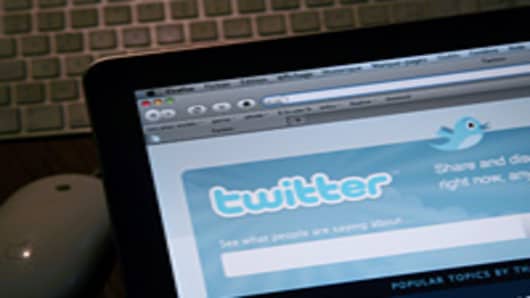The explosion on the Deepwater Horizon rig last April was a disaster of epic proportion for the British driller BP, exposing the company to government censure, a raft of litigation, and billions in costs.
One headache BP may not have expected: a chatty subcontractor, live-blogging on Twitter about the company’s preparations for a major cleanup effort from aboard its intervention vessel, the Q4000.
That subcontractor, a Houston engineer named Justin Grindal, is part of a growing network of citizen bloggers, using Twitter and other social networks to share anything and everything they find interesting about the companies they follow.
Digging into company’s dirty laundry was a job once left primarily to news media and a handful of muckrakers. But now, sites like Twitter, the stock-information network StockTwits, and other online bulletin boards are becoming virtual newsrooms where valuable information about earnings and corporate events are increasingly likely to break first.
“This is a true worst-case, and the industry will be paying for it for years,” BP subcontractor Grindal, aka @jgrindal, tweeted early the morning of May 26, as plans for the Top Kill capping effort—in which heavy drilling fluids were used to try to plug the blown-out deepwater spill—were underway. Hours and dozens of tweets later, he reported a problem: “Flowrate is the major variable right now. This is what is giving engr's headaches.”
A few hours after that, Grindal tweeted that BP had shut him down: “Wow, just got a scathing call from mgmt, requesting I tone down my twitter info.” He then remained silent until May 29—when BP confirmed the failure of the Top Kill operation and the company’s shares plummeted 15 percent.
Grindal, who is in his late 20s, said in a series of telephone interviews that he attempted to honor the non-disclosure agreement he had signed as part of his work for BP. “I didn’t release anything confidential or secret,” he said.
Still, he added, “there were things that American people wanted answers to that BP wasn’t providing, and I thought I could shed light with what was actually going on so they could understand it.”
BP declined to comment on Grindal’s viewpoint or his tweets. But in recent securities filings, the company has acknowledged that, among many other investigations and lawsuits, both the U.S. Securities and Exchange Commission and the Department of Justice are probing “securities matters” in relation to the April oil spill.
Those probes, someone familiar with the matter has said, is focused on whether anyone engaged in any insider trading of BP shares during the cleanup efforts, and whether the company disclosed material information in a timely and accurate way. Spokespeople for the SEC and the Justice Department declined to comment.
Grindal, who declined to elaborate on whether he’s faced any legal ramifications as a result of his tweeting, said in e-mails that he has never owned BP securities. But even in the absence of trading BP shares, a subcontractor who tweeted during material events could find him or herself in a bad spot, say securities lawyers.
That’s because even if the subcontractor never traded, he or she may well have violated their confidentiality agreement with the company, they say—a breach that could be litigated in state court. Nonetheless, they add that when it comes to information leaks, there’s a lot of gray area—including what constitutes materiality, for which there’s no hard-and-fast definition.
“It depends on whether he has material information or just a little piece that would not be important to the ordinary investor,” said Harvey Goldschmid, a Columbia University Law School professor and former SEC Commissioner.
Media organizations and third-party bloggers who have no professional or family relationship to the company in question tend to enjoy the freedom to disseminate whatever information they want, say lawyers.
Bloomberg News, for instance, which in recent months broke news of both Walt Disney and Transocean earnings well before their scheduled releases after finding the information buried on corporate websites, appears to be within its rights to disseminate such information, lawyers say.
They add that the same probably goes for Selerity, a data company that used similar means to reveal Microsoft’s earnings via the stock site StockTwits in late January—or any individual who comes across material information and, in the absence of trading in advance, shares it with the world.
Spokespeople for Disney and Microsoft did not respond to requests for comment.





